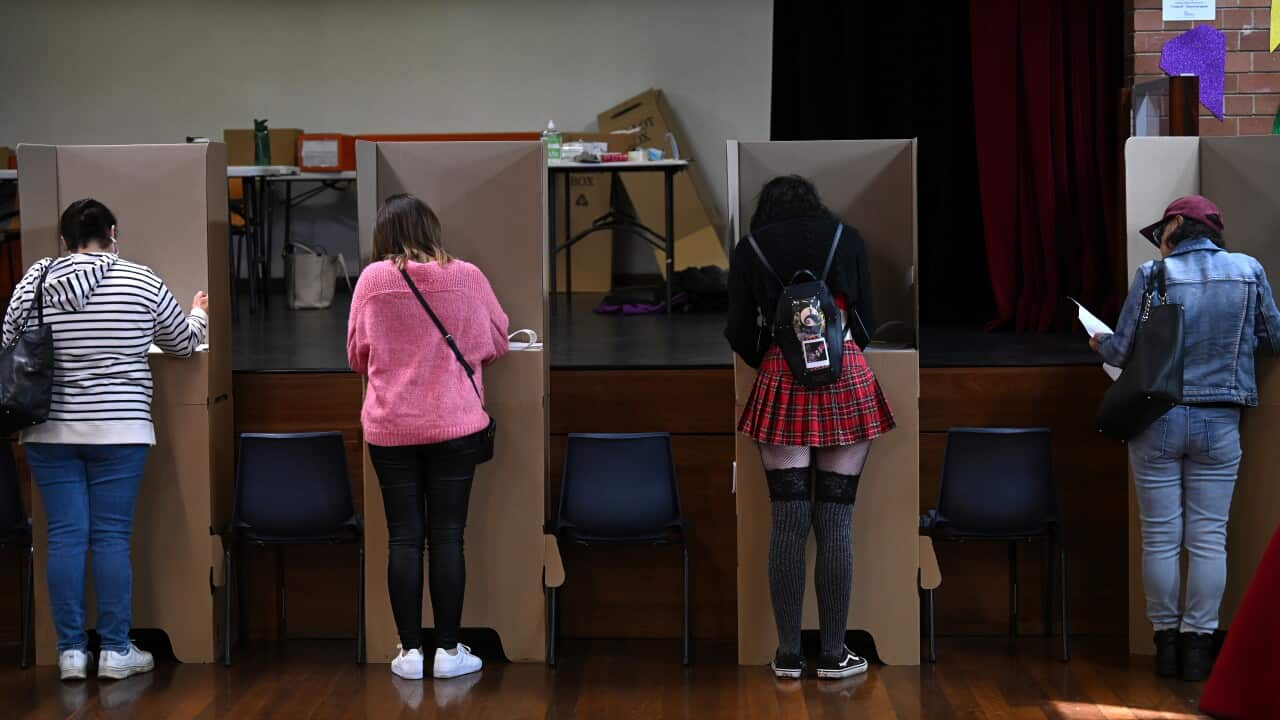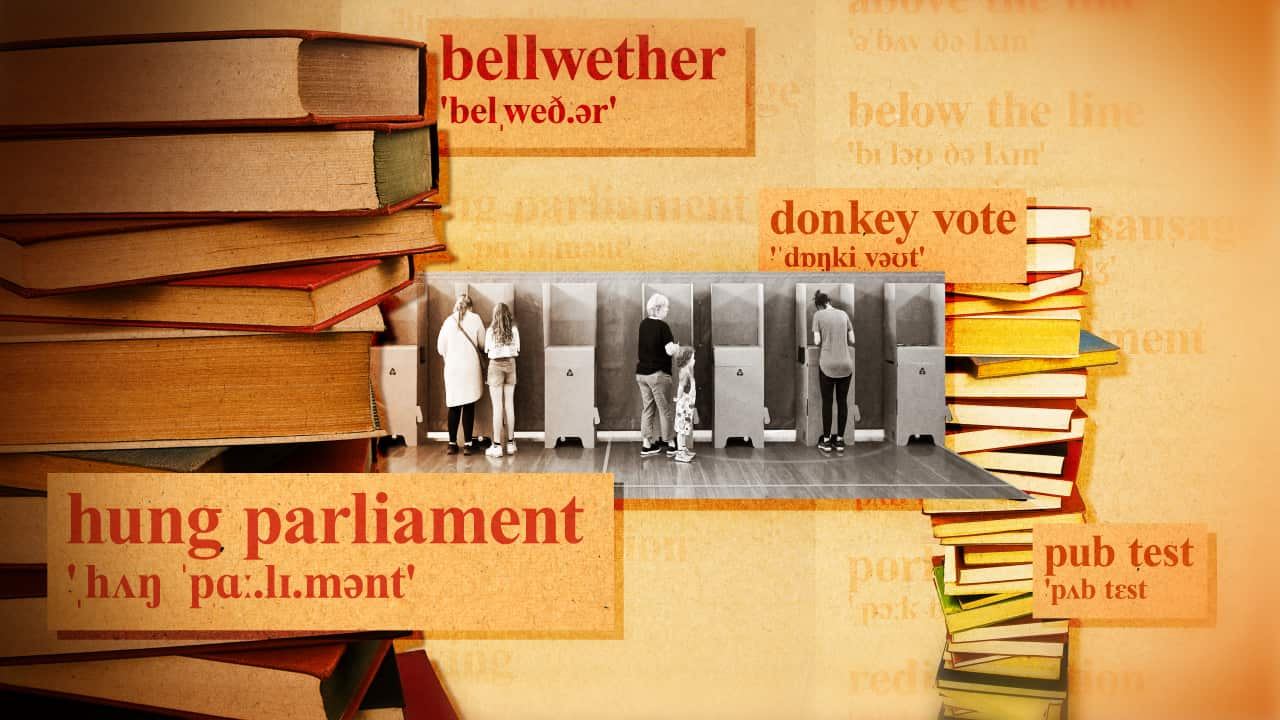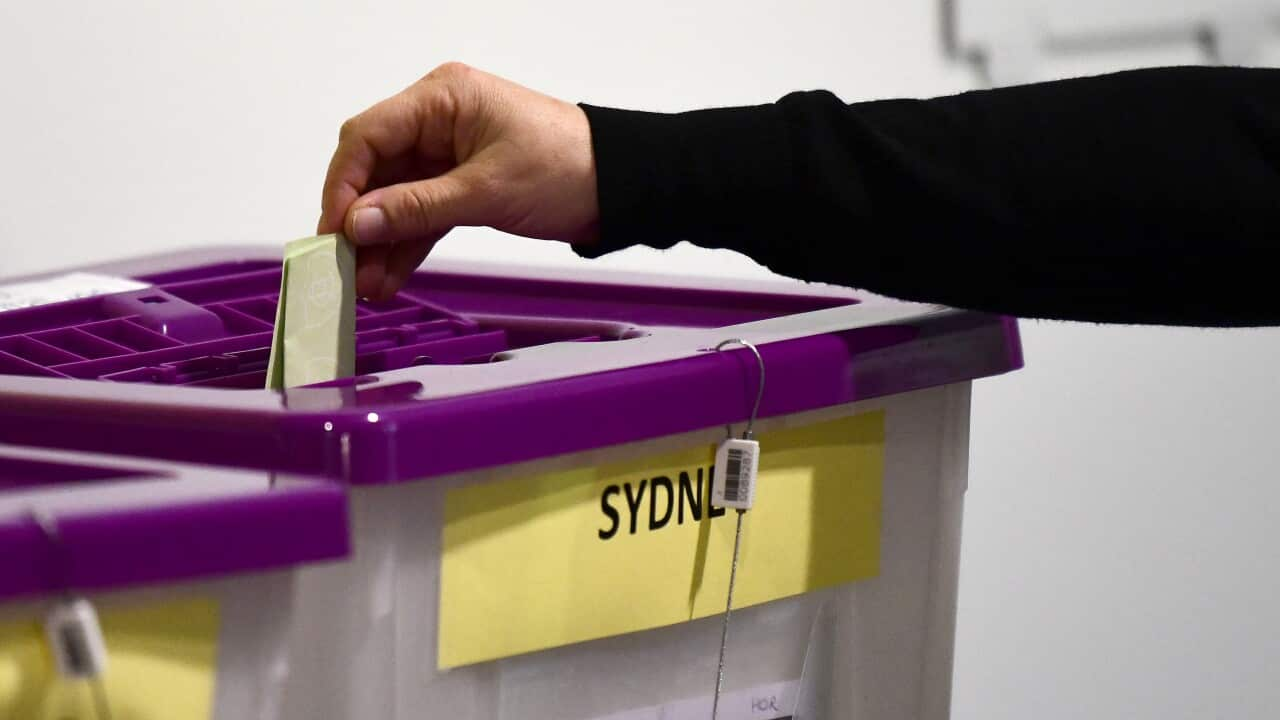Key Points
- The voting process is relatively straightforward for many, but some people with disability face significant hurdles.
- While action is being taken to address accessibility issues, some say it's not enough.
- Not all polling booths are accessible for wheelchair users or people with mobility aids.
For most Australians, voting is a relatively straightforward process.
You turn up to a polling booth, fill in your ballot paper, and on your way out.
But for people with disability, voting can come with a great amount of difficulty — and in some cases, it's preventing them from doing it at all.
Stephanie Travers, a director on the board of People with Disability Australia, said: "When you have a disability, there's always an extra step."
"I think there's a cohort of people with disability who are not voting because it's too hard to access, or they're too ill, or it's too hard to figure out," she told SBS News.
Nye Coffey from the Australian Electoral Commission (AEC) said prior preparation was important for this group of voters because once an election's called, there's a limited amount of time to put anything in place.
"We don't own any of our polling places and we need to secure them in basically 33 days from when an election is announced," he told SBS News.
Coffey said the AEC provides a range of options to make voting more accessible for people with disability.
"That might be using postal voting, it might be using telephone voting if you have blindness or low vision, or it might be going to one of our pre-poll voting centres early in the period where it's quieter," he said.
"If you're in an aged care facility or a mental health ward or hospital, it's quite likely that we'll be servicing that site with a mobile site and people coming out to you."

Not all polling booths are accessible for wheelchair users or people with mobility aids. Source: AAP / Lukas Coch
"For example, telephone voting for if you have a vision impairment — our feedback from our members is that it is still very hard to participate in. There's a lot of background noise ... the staff on the phone aren't trained well," she said.
"There's virtual Auslan when people do go to vote, but there's usually only one person trained in that with the electoral commission when you go there … it's usually the supervisor who is busy doing other things, so you have to go wait in the corner for half an hour to be able to participate."
Progress is being made, but barriers remain
Coffey said electoral officials had consulted closely with organisations from the disability community to address their concerns ahead of the upcoming federal election.
"We've had a big focus in the last few years on the accessibility of our polling places," he said.
"Forty-three percent of our 7,000 polling places will be fully wheelchair accessible for this event and another 48 per cent with assisted access."
Following a pilot in Victoria, Western Australia trialled a low-sensory voting station for .
A polling place at Marangaroo in Perth's north featured a booth with low-sensory lighting and access to break-out areas for use before and after voting.
The aim was to provide a quieter environment for voters who may benefit from it, including autistic people and those with intellectual and developmental or learning disabilities.
Travers said despite recent improvements, voters with disability still faced significant challenges in casting their ballot and were excluded from the election experiences those without disability might take for granted, like a democracy sausage.
"What People with Disability advocates for is some genuine co-design to try and make these places more accessible, both physically, process-wise, more readily available information, and some streamlining of it," she said.
Around 5.5 million people in Australia have a disability, according to the Australian Bureau of Statistics.

Sausages served on a slice of white bread — commonly known as the 'democracy sausage' — are a fixture of many Australian polling centres. Source: AAP / James Ross
"When you enrol, you don't tick a box that says 'I'm a person with a disability'," she said.
"We would hope that the AEC gets on board with capturing the data, because you can't fix a problem unless you know how many people aren't participating."
Coffey said the AEC was doing its best to ensure every eligible member of the public is able to cast their vote.
"Obviously there's a very large proportion of the Australian population with a disability, but also a full spectrum of needs and requirements across the almost 18 million enrolled Australians.
"We do everything we can to make our forms and our processes accessible."



